German Shepherd Ears Chart: 12 Different Shapes
In this article, we’re going to dive into everything you should know about German Shepherd ears, including:
- 12 different GSD ear shapes
- How your GSD’s ear position will change as they mature
- When you can expect your pup’s ears to stand up naturally
- How to help them stand up if they don’t
- What different GSD ear positions mean
German Shepherd Ears Chart
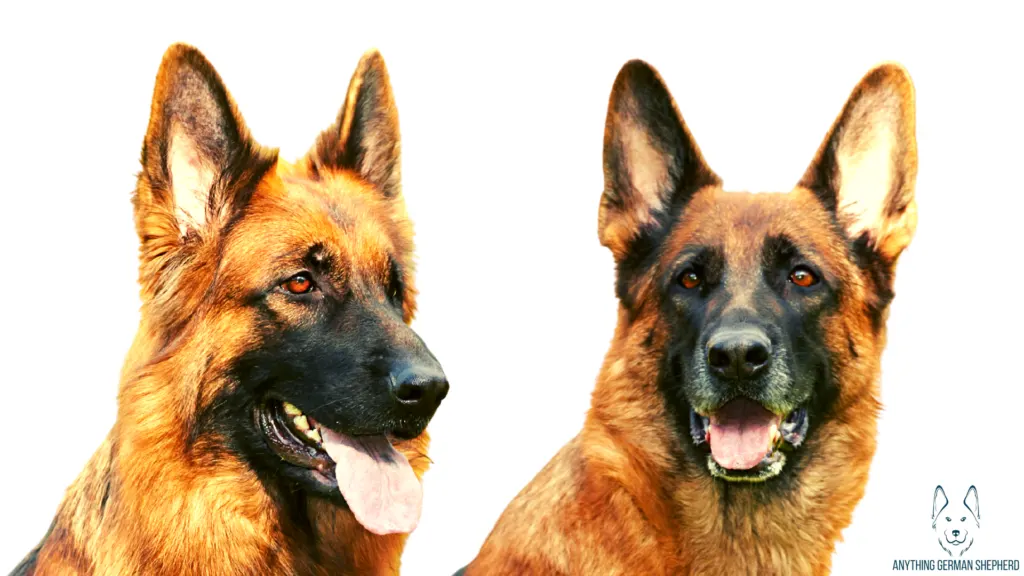
Let’s first take a look at different German Shepherd ear shapes.
We’ll give you visual examples of what perfect German Shepherd ears should look like and go over examples of what they shouldn’t look like.
This isn’t to say that there is anything wrong with your GSD if they don’t have perfect ears.
We are just going to give visual examples of ears that are in line with the official breed standards, and those that are not.
Perfect German Shepherd ears will be slightly triangular, giving them a pointed erect look.
| German Shepherd Ear Shape | Visual Example |
|---|---|
| Ideal | 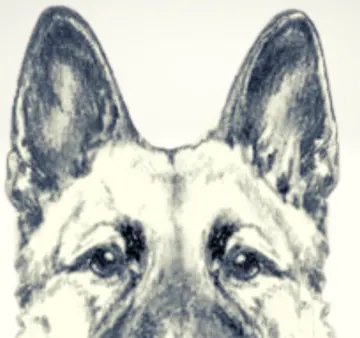 |
| Too Large | 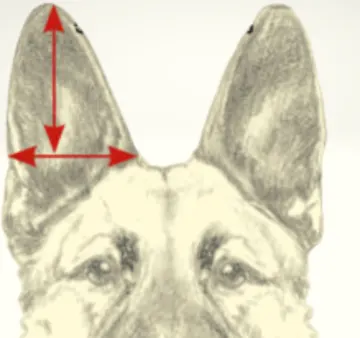 |
| Too Small | 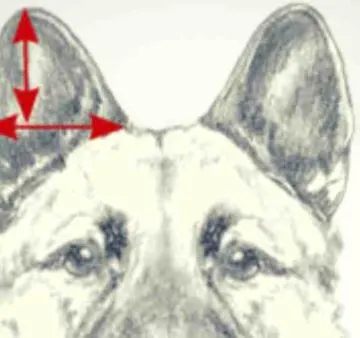 |
| Set Too High | 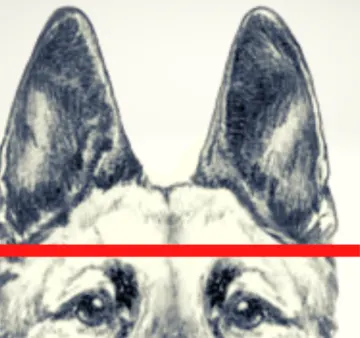 |
| Set Too Low | 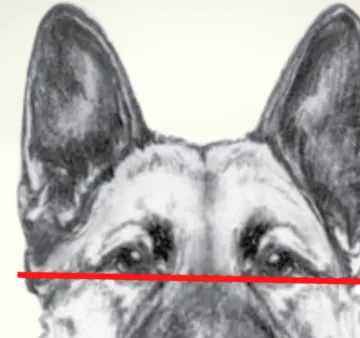 |
| Pointing Outwards | 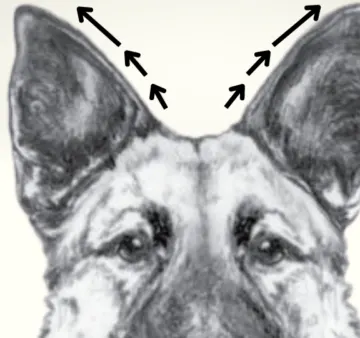 |
| Pointing Inwards |  |
| Crescent Shape | 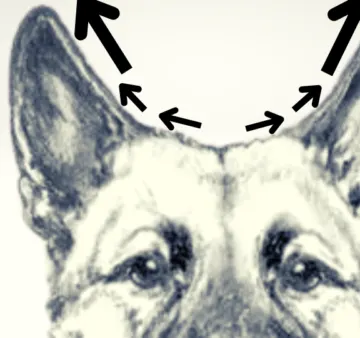 |
| Tilting One Way | 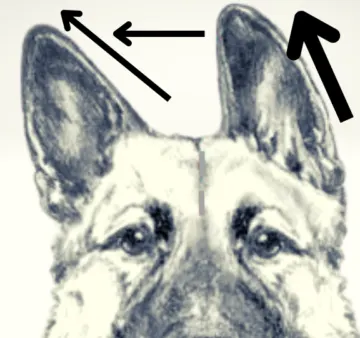 |
| Not Facing Forward | 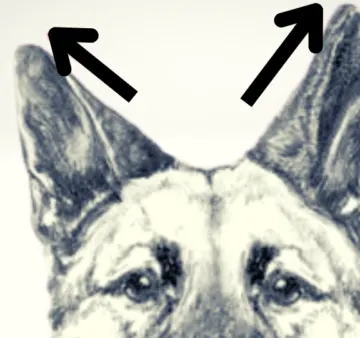 |
| Weak | 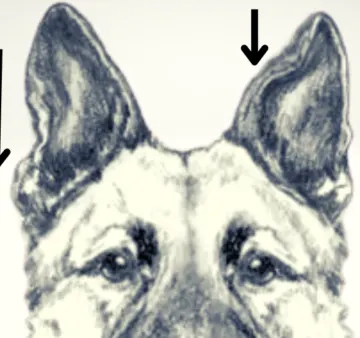 |
| Floppy | 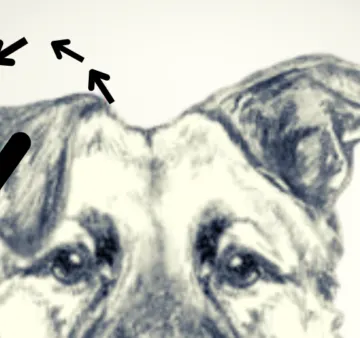 |
Their size depends on the dog and should be proportionate to the size of the head.
For example, a smaller German Shepherd with a smaller head, should not have overly large ears – and vice versa.
Regardless of the overall size of the ears, the height of the ear should always be equal to the width of the ear (at the base).
They should also open facing the front and should be parallel to each other. They should be perpendicular to the ground.
The ears should also not be set too low or too close together.
Ideally, the base of the ear should be directly above the middle of the eye.
Ideal German Shepherd Ears
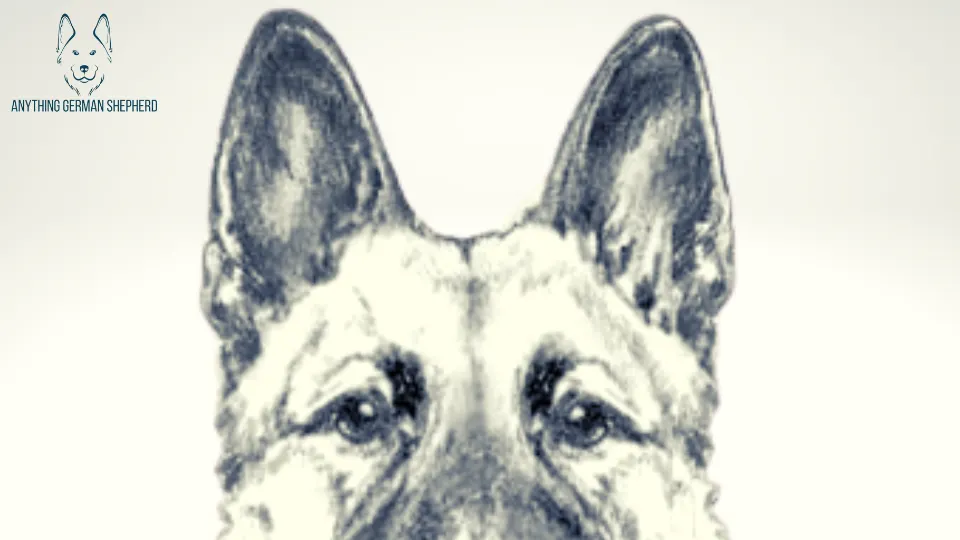
Perfect German Shepherd ears should be symmetrical in that they are just as wide as they are tall, and the eyes should be in line with the inner part of the ear.
Notice as well that the ears:
- Are triangular and erect
- Are proportional to the size of the head
- Open towards the front
- Are set well apart and high
- Are parallel to each other and perpendicular to the ground
Too Large
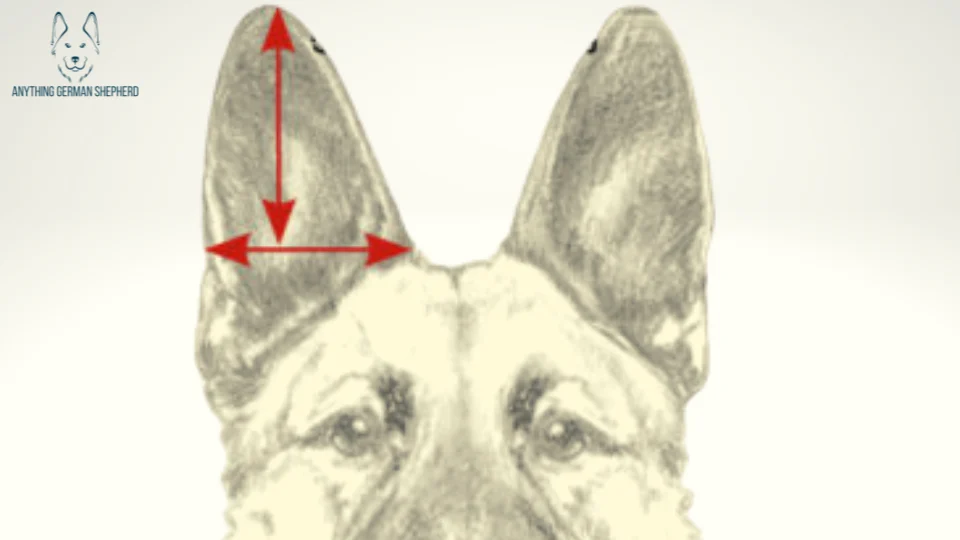
Ears that are too large will be longer in height than they are in width (at the base).
This will give them more of an elongated look.
Too Small
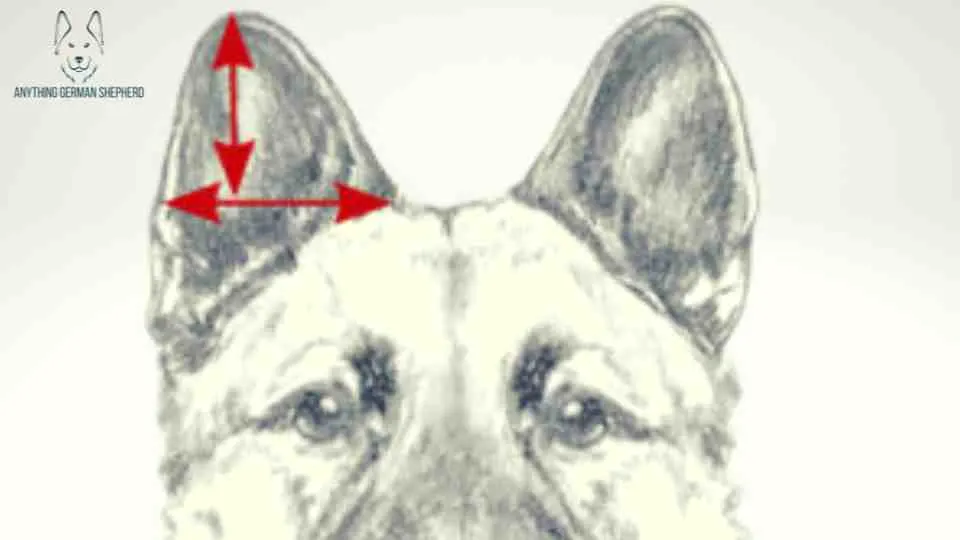
Ears that are too small will be shorter in height than they are wide.
This will give the German Shepherd’s ears a shorter and more stubby look.
Set Too High
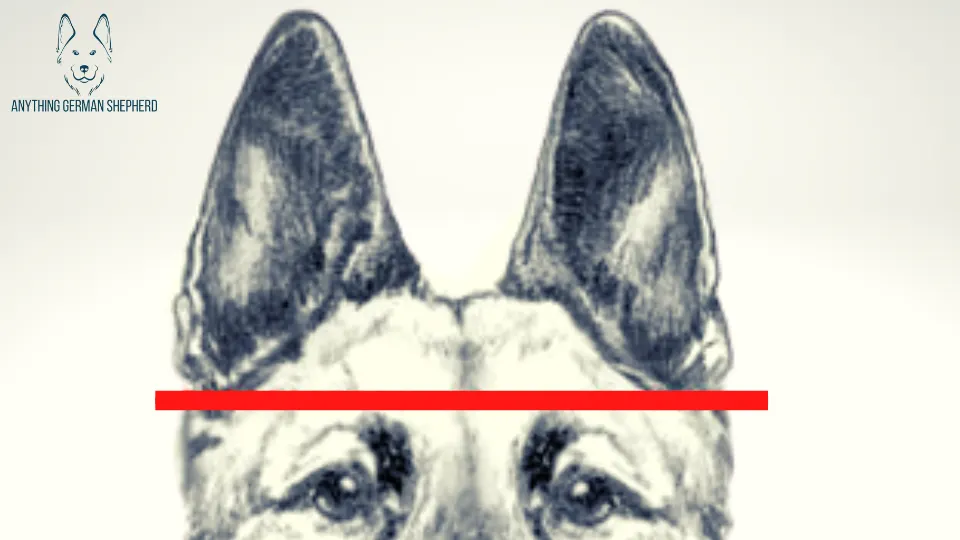
The bases of the ears are set too high in this example.
Ideally, the bottom of the ears is supposed to be just above the middle of the eyes for German Shepherds.
Set Too Low
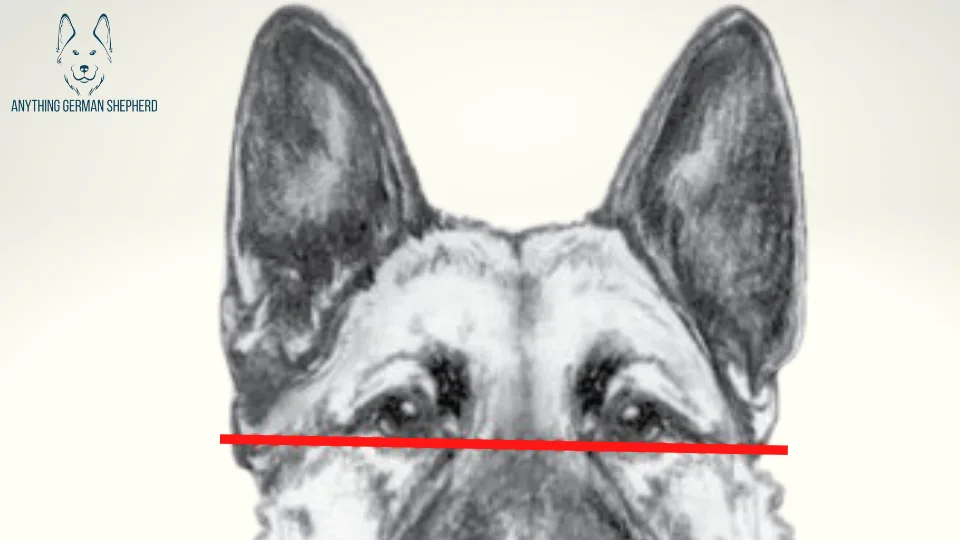
This example shows the opposite of what we viewed above.
The base of the ears is too low here, extending to the bottom of the eyes.
Perfect GSD ears will be set slightly higher than this.
Pointing Outwards
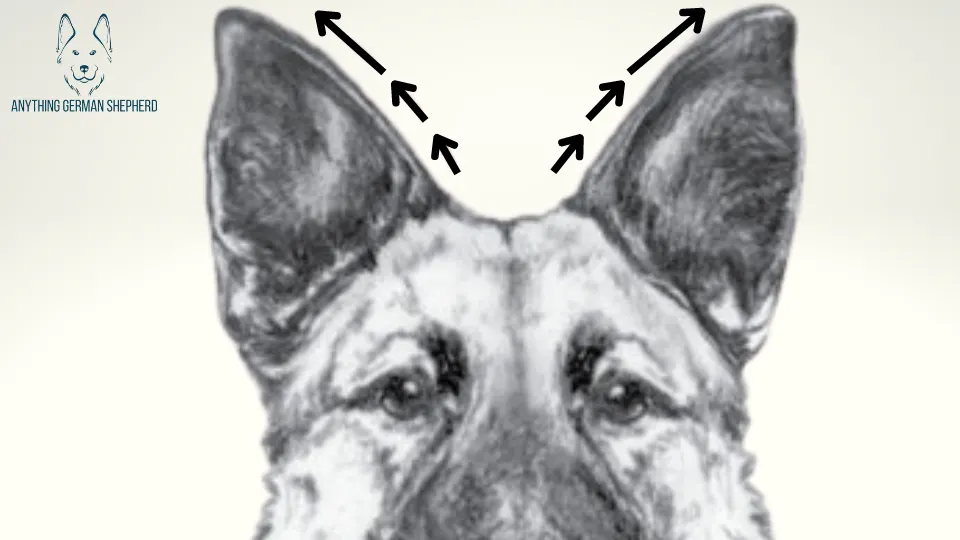
Instead of standing erect, straight, and pointing upwards, the ears in this example point outwards.
They are also slightly curved and open to the sides, instead of toward the front.
Pointing Inwards
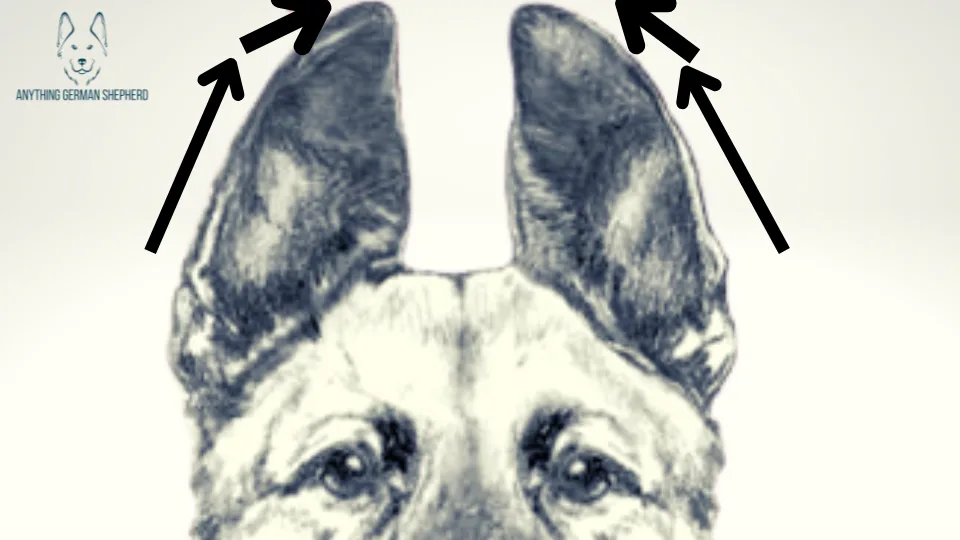
Opposite to the prior example, these ears curve and point inwards.
In certain cases, this issue is even more pronounced – to the point where the German Shepherd’s ears actually touch each other.
Crescent Shape
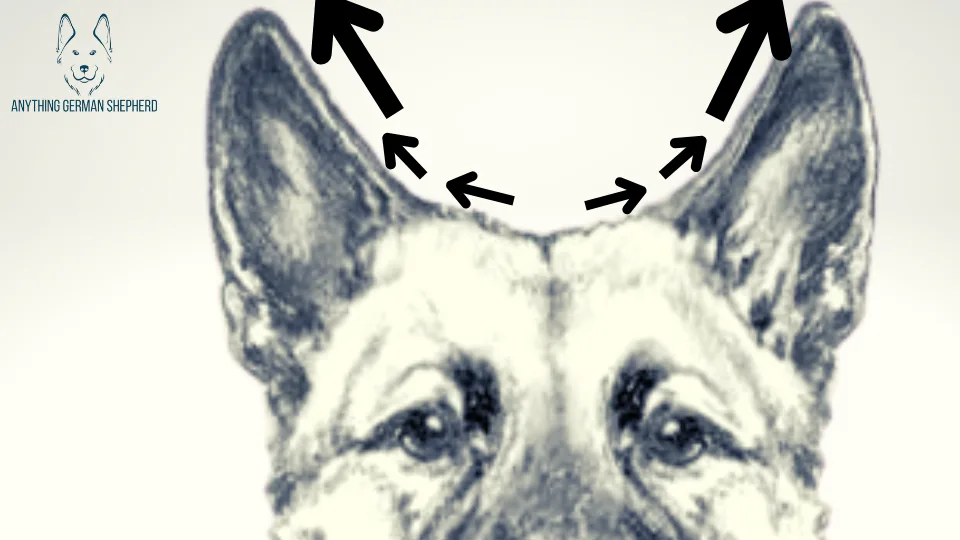
In this case, the dog’s ears have a crescent or curved shape.
The shape is thicker in the middle and tapers out to thin points at each end.
Ears Tilting One Way
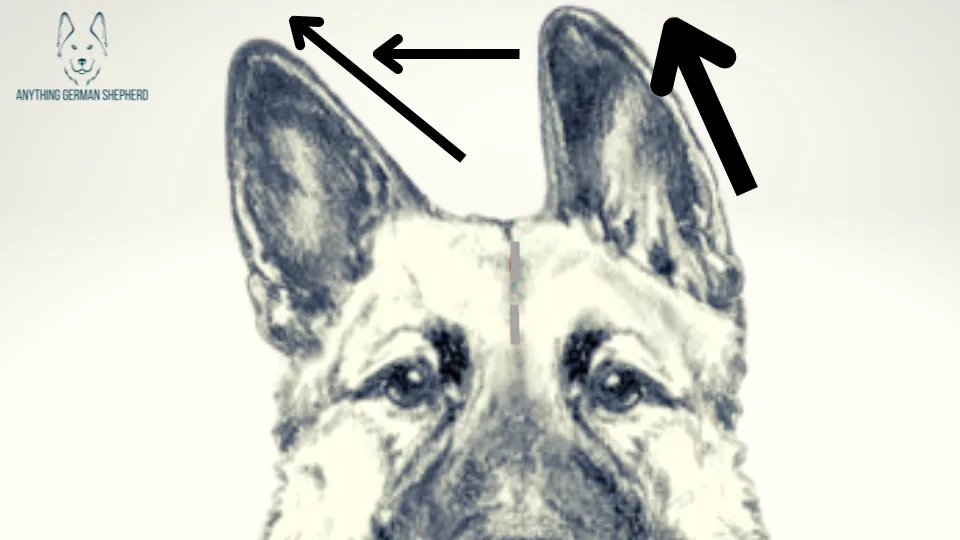
The dog’s ears here are slanted, off-center, and tilted in one direction.
They are not quite strong enough to stand perfectly straight and, as a result, end up falling to one side.
Ears Not Facing Forward
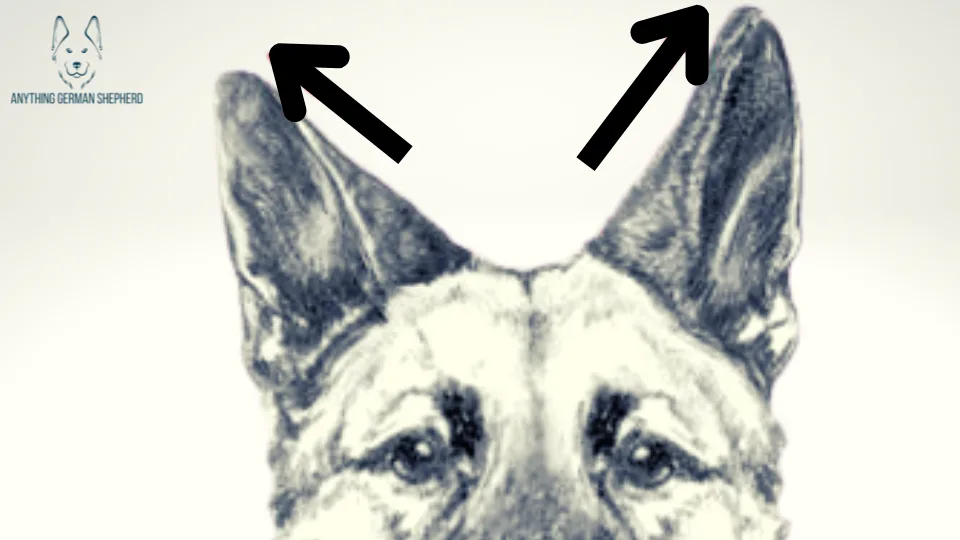
The dog’s ears are rotated so that they are facing outward, instead of facing forward.
But just because a German Shepherd has ears like this doesn’t mean that they aren’t strong enough to stand erect.
This is strictly an issue in the way the ears open.
Weak Ears
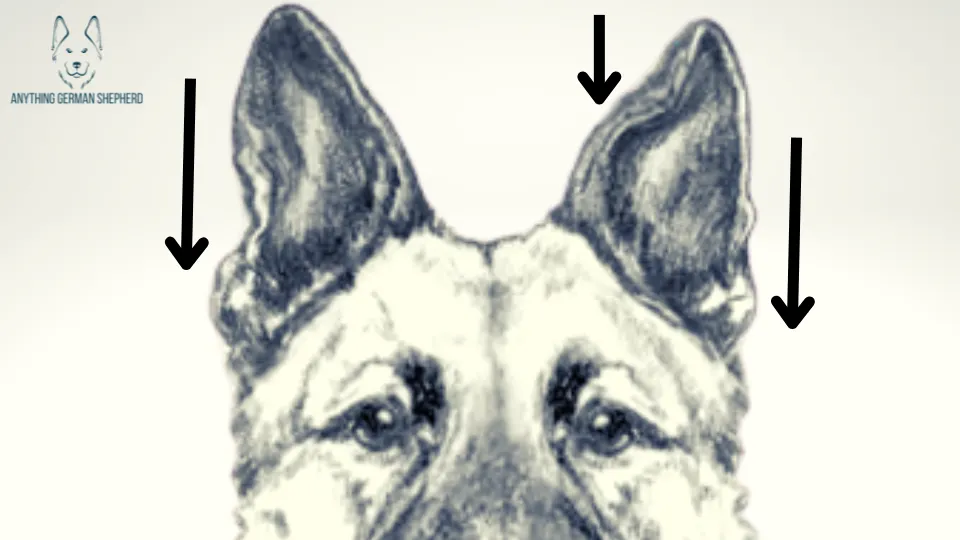
Ears that are too weak will not have developed strong enough cartilage to hold them in an erect position.
Instead, they will ‘crumble’ on top of themselves and won’t be strong enough to stand in their upright position.
Weak surrounding muscles and tissues will also be to blame here – not just the ear cartilage.
Floppy Ears
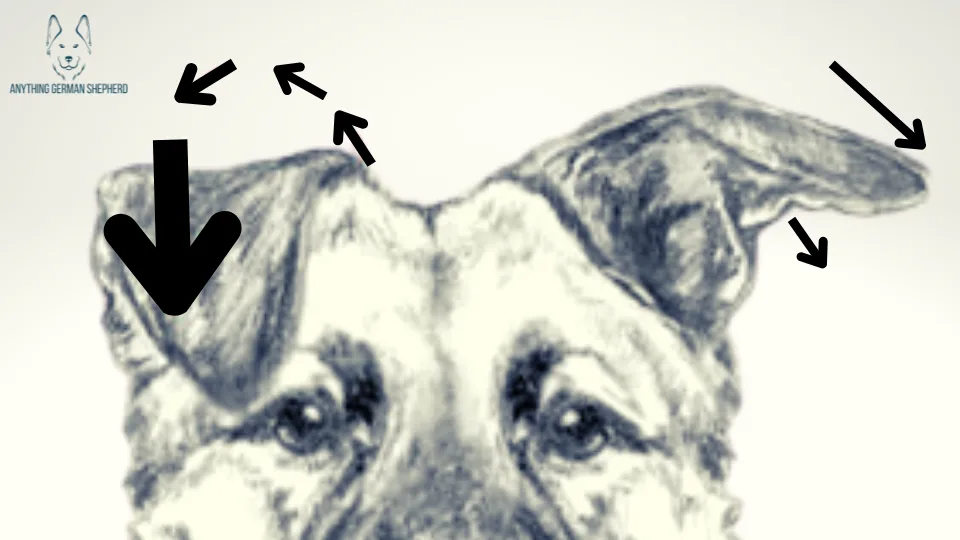
In the same way that weak ears will crumble on themselves, floppy ones are even weaker.
They won’t be strong enough to stay standing in the upright position and instead will flop forwards or sideways.
German Shepherd Ears Chart: From Puppy to Adult
German Shepherd puppy ears grow just like the rest of their bodies and, most often, are soft and floppy in the first few weeks or months of their life.
Over time, as their cartilage develops, you can expect your GSD puppy’s ears to begin perking up.
Depending on your German Shepherd puppy’s genetics, you can expect their ears to stand up by the time they are about five months old.
Their ears may perk up sooner or even perk up and then flop down again by the time they reach this age.
The exact time your German Shepherd puppy’s ears will stand up depends on the puppy’s specific development, as well as their body size.
To learn more about GSD puppy ears and their different stages of development, you can check out our article on German Shepherd Puppy Ear Stages.
Birth to 3 Months of Age
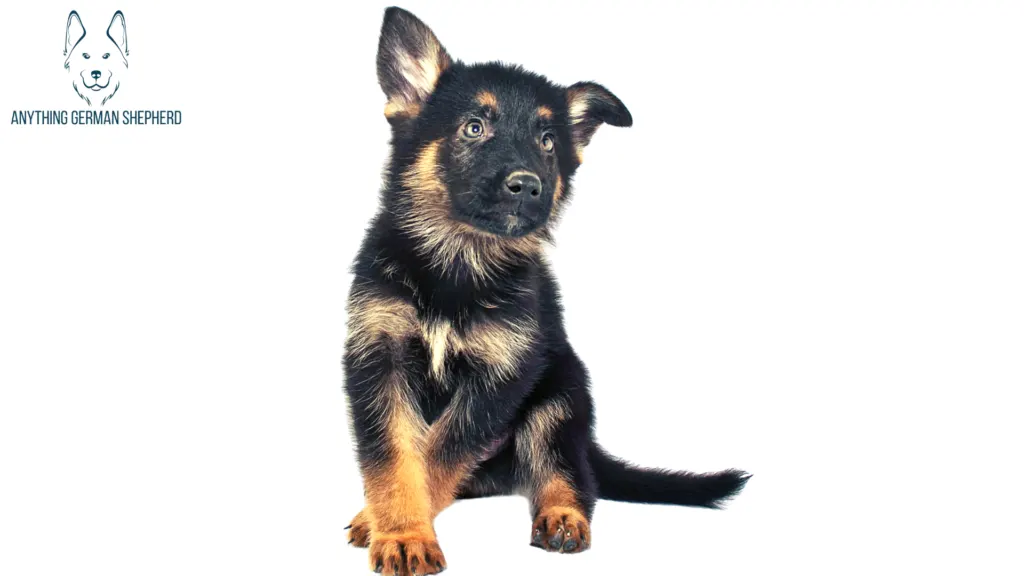
Just like all dogs, German Shepherds are born with floppy years.
This is largely because, as newborns, their ear cartilage is not strong enough to keep their ears standing straight.
As their bodies develop and they get more calcium, German Shepherd puppy ears will begin to perk up and stand fully erect.
This can happen as early as four weeks after birth or as late as five months.
Therefore, you should not worry if your puppy’s ears aren’t perfectly pointy but floppy in their first three months of life.
This is perfectly normal.
3 to 6 Months of Age
German Shepherds start teething between the ages of two and four weeks old and their adult teeth typically start developing by the time the puppy is six to eight weeks old.
The teething period for German Shepherd puppies usually lasts for four to six months.
Because teething also requires calcium, it can have a big impact on the time your German Shepherd’s ears stand.
This is because their bodies are allocating calcium resources away from their ear cartilage and toward their teeth during this time.
In some cases, the puppy’s ears can start perking up early and then flop back down again throughout the period the puppy is teething.
As their teething period ends, the puppy’s ears will typically stand up straight again.
German Shepherd dogs’ ears generally stand up on their own by the time the puppy is four to five months old.
6 to 8 Months of Age
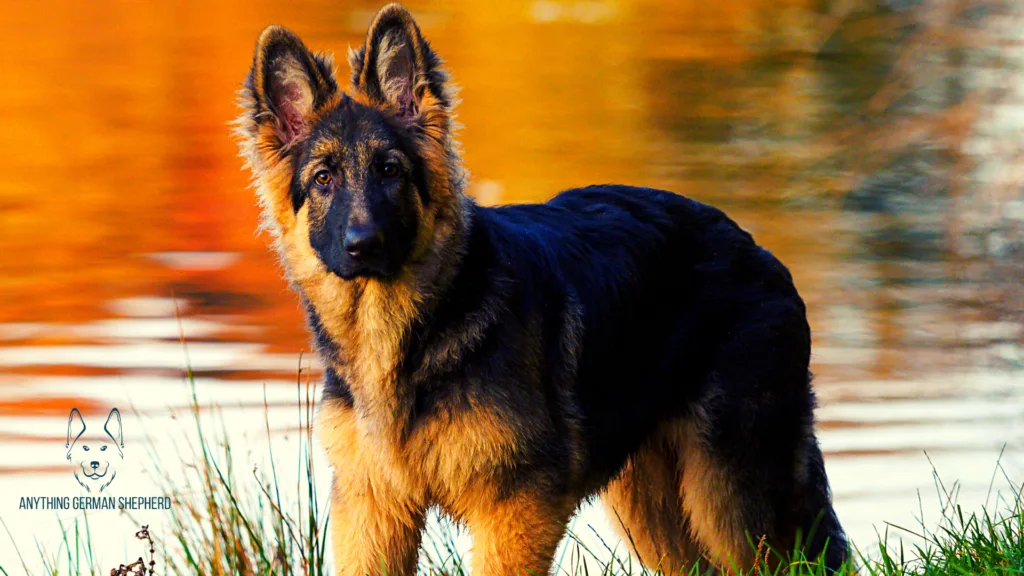
The six-month mark is the most important in the development of your dog’s ears.
By six months old, the teething period ends and your German Shepherd puppy’s ears should be fully erect.
If you notice your German Shepherd puppy still has floppy ears by this time, you should consider talking to your veterinarian.
They can walk you through your options and recommend solutions like taping the dog’s ears to ensure they develop the classic German Shepherd Dog pointy ears look.
Ideally, you should take action to strengthen your German Shepherd’s floppy ears by the time they reach the eight-month-old mark.
8 to 12 Months of Age
German Shepherds ears should be standing up tall and strong by the time they are eight months old if they are to meet the breed’s standards.
This can happen naturally or with a little help from you.
If you notice their ears are still floppy when the puppy is around six months old, discuss options with your veterinarian.
Taping German Shepherd ears and using a popsicle stick to prop them up is not an uncommon solution.
This will strengthen the dog’s ears and help them stand up straight without help after a while.
Do German Shepherd Ears Stand Up Naturally?
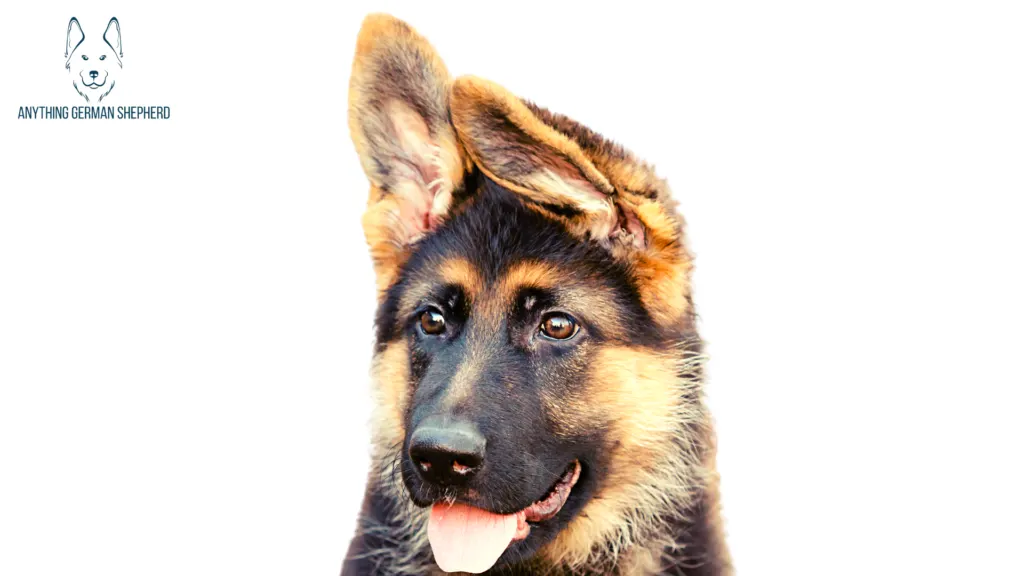
Yes, German Shepherd ears stand up naturally.
However, certain factors will influence the exact time your dog’s ears start to perk up and whether or not they will continue to stand up straight.
When Do German Shepherd Ears Stand Up?
Floppy ears are not uncommon in German Shepherds in the first few months of their life.
German Shepherd ears typically stand up naturally four to twenty weeks after the puppy is born.
The exact time your puppy’s ears begin to perk up will depend on several factors such as the dog’s genes, their overall health, and their size.
When a German Shepherd’s ears stand up depends on:
Diet And Nutrition
To grow up strong and healthy and have beautiful, pointy ears, your German Shepherd puppy needs a proper diet.
Nutrition plays an important role in the proper development of German Shepherd Dogs.
That’s why you must ensure you feed your German Shepherd Dog high-quality dog food to support their growth spurt in the first year of life as well as after.
A proper diet must include essential vitamins and minerals that support the dog’s development.
The most important vitamins and minerals you need to give your growing German Shepherd puppy include:
- Calcium
- Magnesium
- Manganese
- Sulfur
- Collagen
- Hyaluronic acid
Check your puppy’s kibble to make sure they contain a sufficient amount of these essential nutrients and consider supplementing or changing their diet if they don’t.
Stress Or Trauma
Factors that can also influence if and when your German Shepherd puppy starts to have erect ears include stress or trauma.
For instance, it could be that your dog’s ears are not yet standing up because of an injury to one or even both ears.
An injury can also cause their ears to suddenly drop if they were erect before.
German Shepherd puppies can get hurt while playing, can get bitten by another dog, or simply get a twig or splinter caught in their ear.
In other cases, the issue may simply be that they scratched their ears too much.
Broken ear cartilage is a common issue affecting German Shepherd dogs.
It can be caused by an injury or even genetics. This condition is not usually painful and the cartilage will repair itself with proper care over time.
It’s important to know that head or ear trauma may change your dog’s ear position and appearance.
If your dog’s ears are not standing up naturally by the time they are six months of age or if one or both of their ears suddenly drop, you should consult your veterinarian.
They can help rule out issues like injury, ear infections, developmental problems, or stress as the culprits and provide appropriate solutions.
Teething
German Shepherd puppies need calcium to grow healthy bones and teeth.
They also need calcium to develop strong ear cartilage that will help their ears stand upright.
As mentioned above, most of the calcium your German Shepherd’s ears need to grow strong will be allocated to the teething process until their adult teeth come in.
That is why it’s not uncommon for a German Shepherd puppy to have floppy ears until they are six months of age.
Therefore, you should not worry if you only see erect ears in your German Shepherd puppy once they are done teething.
In other cases, their ears may start to perk up and drop back down during the teething period, only to perk back up again once the adult teeth are fully developed.
Breeding
Strong muscles and ligaments are required to keep your dog’s ears standing up straight.
In certain cases, muscles and ligaments do not develop properly because of genetic or breeding issues.
Some German Shepherd owners fail to check their puppy’s background properly and may end up with a dog that has health a host of health issues and appearance flaws, including floppy ears.
Poor genetics may be caused by improper diet during puppyhood and improper breeding practices and can lead to floppy ears.
Other breeding-related issues that may cause the pup’s ears to not perk up include infections caused by poor ear hygiene or ear mites or untreated ear injuries.
Why Does My German Shepherd Have Floppy Ears?
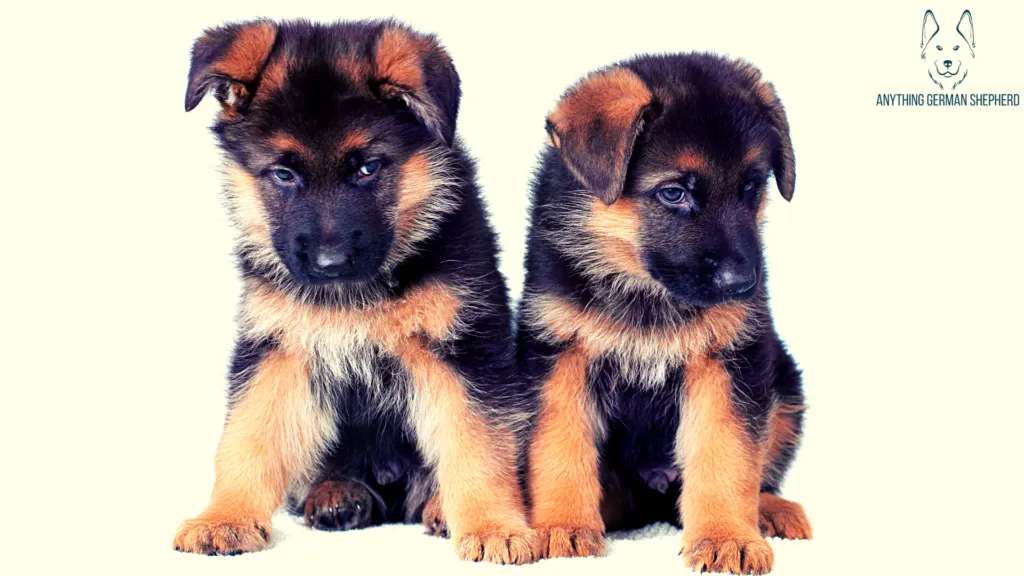
Although most German Shepherds have beautifully pricked ears, some don’t yet, while others may not ever develop erect ears.
It is completely normal for young puppies to have floppy ears.
You shouldn’t worry about your German Shepherd having droopy ears as long as they are under five months old.
However, if your puppy is above that age and still not showing signs that their ears are perking up, there may be other reasons for this, including genetics, poor breeding, ear infections, diet, or injuries.
You should investigate the underlying cause and talk to your veterinarian about your options.
Why Do My German Shepherd’s Ears Go Up and Down?
While your puppy is growing and their features are still developing, the ears may go up and down.
It’s not uncommon for German Shepherd owners to see their pup’s ears begin to perk up when the dog is only a few weeks old and then go back down.
This typically happens when the dog is around three months old and they start teething.
Since most of the calcium resources are directed to the teeth during the teething period, the lack of calcium to their ear cartilage sometimes causes the ears to flop.
However, this is only temporary and the ears should stand up again once the teething is over.
How Do I Get My German Shepherd’s Ears to Stand Up?
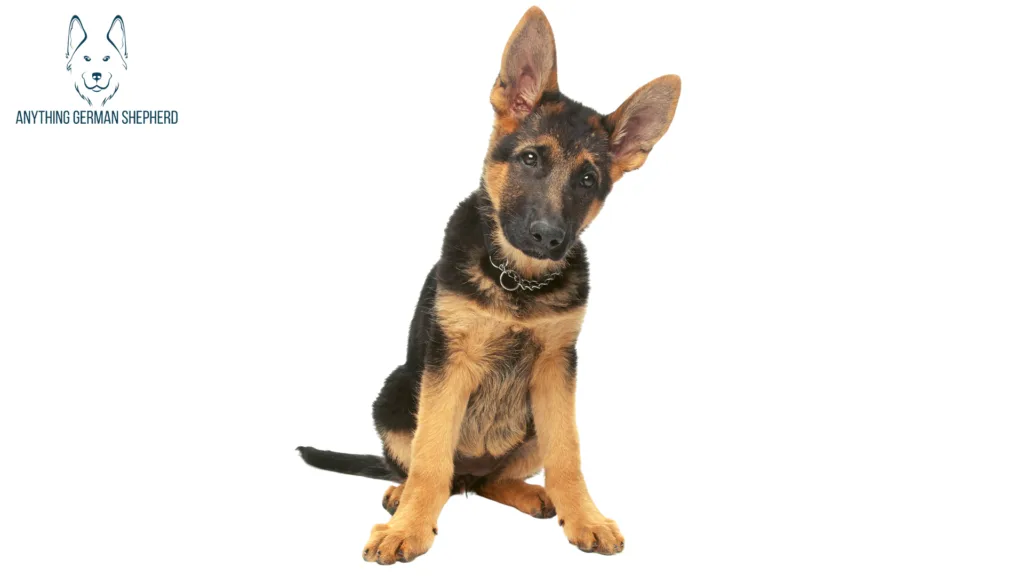
Pricked-up ears are a staple of the German Shepherd breed and surely a feature you want your GSD to have.
If they are not there yet on their own, there are a few ways to help your German Shepherd puppy get their ears straight and standing up strong.
Taping
While it may sound like something that may cause them discomfort at first, you should know that taping German Shepherd ears is a common technique.
It will not cause any harm to your puppy as it simply guides their ears into the correct upright position.
What you’ll need for this technique:
- thin white surgical tape (not duct tape)
- foam hair rollers or foam pipe insulation (which you will cut to size)
- two plain popsicle sticks (you can also use unsharpened pencils)
Once you’ve gathered your supplies, take one popsicle stick and insert it in the foam roller or piece of foam pipe, through the middle.
Next, put the popsicle stick and foam into the puppy’s floppy ear and use the surgical tape to keep the insert in place.
If the dog only has one affected ear, you don’t need to have both their ears taped, only the one floppy ear.
Your GSD puppy will most likely paw at the insert at first but they will eventually get used to it.
Leave it on for a week and you should see a change in the ear position by that time.
If the ears are not standing up on their own after a week, re-tape the insert and keep it on for another week until you check their position and strength again.
Diet & Supplements
Your GSD’s nutrition must support their overall health as well as the strength of their bones and cartilage.
This is important not only as they grow and develop but also into their adult life, as German Shepherds are prone to certain health issues.
Ensure your dog’s diet is high in nutrients like calcium and glucosamine that support strong and healthy ears.
Surgical Implants
Surgical implants are typically used when the dog’s ears have cartilage damage. They help the ears heal while also guiding them to stand up straight.
Protect Ears From Trauma
To avoid accidents or injuries that may damage your German Shepherd puppy’s ears and cause them to flop or not perk up, you should pay close attention to them when they play.
For extra safety, you can place a headband on the puppy while they engage in activities with other dogs.
You should also ensure their ear hygiene and keep water out of their ears to reduce the risk of infections and head shaking.
When Should I Tape My German Shepherd’s Ears?
Consider taping your German Shepherd’s ears if their ears are not standing up straight on their own by the time the puppy is six months of age.
Is It Safe to Tape German Shepherd Ears?
Yes, taping is a common, non-invasive technique you can safely use to guide your dog’s ears into their correct upright position.
What Do German Shepherds Ear Positions Mean?
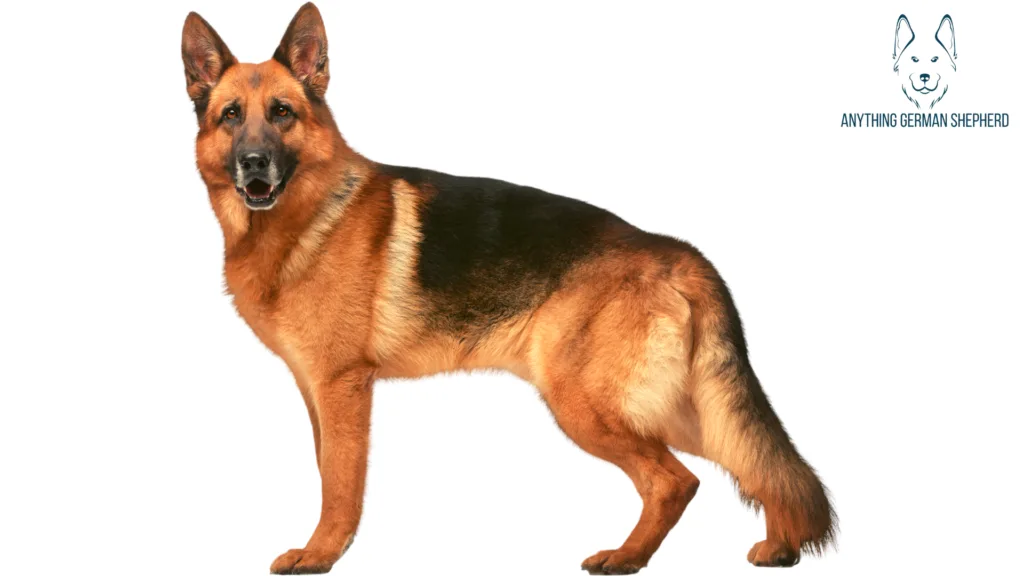
German Shepherds use their ears to communicate and different ear positions mean different things.
For instance:
- If the dog is alert, their ears will perk up.
- If they are submissive, they will tilt back.
- If they are fearful or anxious, their ears will drop back.
- If they are focused on more than one sound, they may tilt in different directions.
What Does It Mean When German Shepherd’s Ears Are Down?
You can interpret your dog’s ear position differently depending on their body language and tail movements.
If the dog’s ears are back but they are excitedly wagging their tail, this generally means they are happy to see you.
If their ears are back and they have an open mouth or are yawning, this may mean your dog is stressed or anxious.
If they are all the way back and your dog is whimpering, they may be showing signs of sickness.
What Kind of Ears Will My German Shepherd Have?
Your GSD puppy will most likely have droopy ears until they are five to six months old and beautifully straight and strong upright ears for the rest of their life.
However, how your GDS’s ears develop will depend on many factors, but in particular their genetic traits, their diet, and how you care for them.
Do German Shepherds Have Pointed Ears?
Yes, German Shepherds keep their ears perked and upright given their strong but flexible cartilage.
Final Thoughts
German Shepherds are majestic creatures and their perked ears are among the most notable physical features of this popular breed.
Follow the advice above to keep your pup’s ears healthy and strong and to make sure their ear position is correct.






























